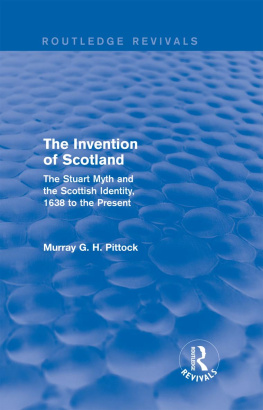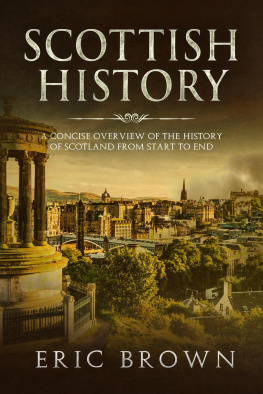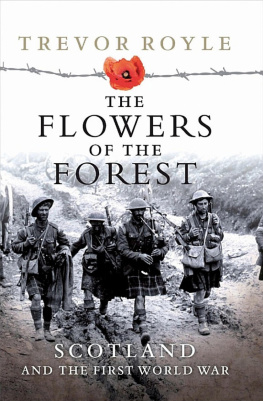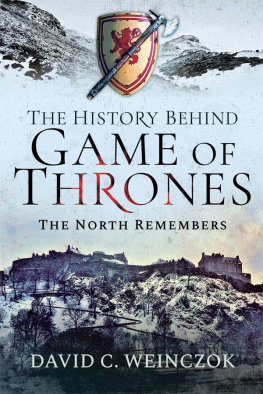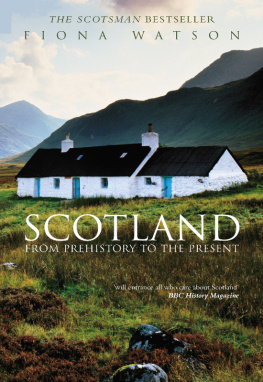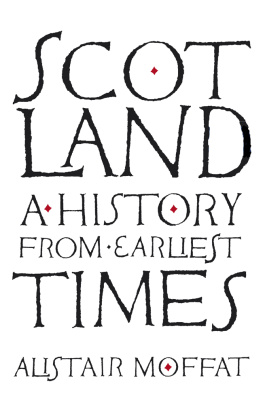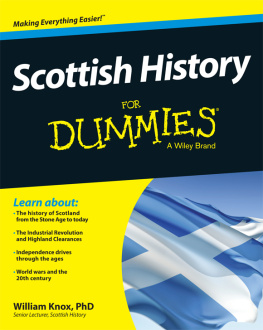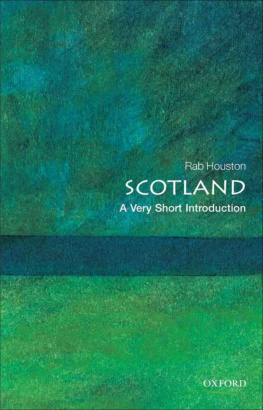SCOTLAND
BEFORE
THE INDUSTRIAL
REVOLUTION
Longman Economic and Social History of Britain
General Editor: J.V. Beckett
Professor of English Regional History, University of Nottingham
This new seven-volume series will become a standard recommendation for students and other readers in search of an authoritative but readable introduction to the economic and social history of Britain from the Norman Conquest to the present day.
Distinctive features will be the commitment to a genuinely British approach, especially from the Union onwards; the openness to new ideas and new approaches; the effective use of instances and examples to animate theory; and a concern with both regional unity and regional diversity, to highlight the development of a national economy and a national consciousness.
The first volume to be published is:
SCOTLAND BEFORE THE INDUSTRIAL REVOLUTION
An Economic and Social History, c1050c1750
Ian D. Whyte
SCOTLAND
BEFORE
THE INDUSTRIAL
REVOLUTION
An Economic and Social History
c1050c1750
IAN D. WHYTE
First published 1995 by Longman Group Limited
Published 2013 by Routledge
2 Park Square, Milton Park, Abingdon, Oxon 0X14 4RN
711 Third Avenue, New York, NY 10017, USA
Routledge is an imprint of the Taylor & Francis Group, an informa business
Copyright 1995, Taylor & Francis.
All rights reserved. No part of this book may be reprinted or reproduced or utilised in any form or by any electronic, mechanical, or other means, now known or hereafter invented, including photocopying and recording, or in any information storage or retrieval system, without permission in writing from the publishers.
Notices
Knowledge and best practice in this field are constantly changing. As new research and experience broaden our understanding, changes in research methods, professional practices, or medical treatment may become necessary.
Practitioners and researchers must always rely on their own experience and knowledge in evaluating and using any information, methods, compounds, or experiments described herein. In using such information or methods they should be mindful of their own safety and the safety of others, including parties for whom they have a professional responsibility.
To the fullest extent of the law, neither the Publisher nor the authors, contributors, or editors, assume any liability for any injury and/or damage to persons or property as a matter of products liability, negligence or otherwise, or from any use or operation of any methods, products, instructions, or ideas contained in the material herein.
ISBN 13: 978-0-582-05091-4 (pbk)
British Library Cataloguing-in-Publication Data
A catalogue record for this book is available from the British Library
Library of Congress Cataloging-in-Publication Data
Whyte, Ian (Ian D.)
Scotland before the Industrial Revolution: an economic and social history, c1500c1750 / Ian D. Whyte.
p. cm. -- (Longman economic and social history of Britain)
Includes bibliographical references and index.
ISBN 0-582-05090-1 (CSD). -- ISBN 0-582-05091-X (pbk.)
1. Scotland--Economic conditions. 2. Scotland--Social conditions.
I. Title. II. Series.
HC257.S4W48 1995
330.941l--dc20 | 94-35109 CIP |
1969 saw the publication of T.C. Smouts A History of the Scottish People 15601830,1 a landmark in the social and economic history of Scotland which, in reviewing what was already known, pointed out many new directions for historians. In the last 25 years there has been a veritable explosion of research and scholarship in what had previously been a neglected field. Whole new areas of study relating to pre-industrial Scotland have been opened up or reappraised including agriculture, urban development, social structure, demography, crime, witchcraft, wages and prices, diet and literacy. This research has generated new questions about Scotlands past and led to the exploitation of an ever wider variety of sources. It has also featured the adoption of theoretical approaches drawn not only from history but also from other disciplines including anthropology, economics, geography and sociology.
The purpose of this book is to review Scotlands economic and social history from early medieval times to the eve of the Industrial Revolution in the light of recent research. The problems of compressing into a single volume the development of a country with up to a million inhabitants over 700 years have been considerable. Of necessity I have had to be selective and I have been unable to do full justice to a number of important themes. Although I have tried to highlight new work on medieval Scotland, coverage is weighted towards the last 250 years or so of my period. Bearing in mind that this book forms part of a series on the economic and social history of Britain, this has enabled me to emphasise the growing integration which occurred between Scotland and England from the sixteenth century onwards.
In the past Scottish history has often been introverted and parochial. Stress has been laid on the distinctiveness of Scotlands society and institutions rather than on drawing meaningful parallels and contrasts with neighbouring countries. The effect of this has been to marginalise Scottish history in European terms by making its concerns seem peripheral to mainstream scholarship. Historians south of the Border have often been equally guilty of parochialism by ignoring Scotland. Much so-called British history is still English history with barely a cursory glance at the Celtic periphery. An aim of this book is to try to present the development of Scotland in broad terms emphasising similarities and differences with neighbouring countries.
In a sense this book has been some 25 years in the making for it reflects my own attempts to understand and explain the workings of Scotlands society and economy in the past. Along this path I have received stimulus and encouragement, directly and indirectly, from a great many people. Among those who have been most influential I would like to record my gratitude to Ian Adams, Bob Dodgshon, Gordon Donaldson, Tom Devine, Sandy Fenton, Rab Houston, Michael Lynch, Rowy Mitchison, Ian Morrison, Christopher Smout and Graeme Whittington. Although their ideas and those of many other scholars have influenced the way I have written this book its shortcomings are entirely my own responsibility.
. T.C. Smout, A History of the Scottish People 15601830 (London 1969).
For
Kathy, Rebecca and Ruth

T ill Birnam Wood do come to Dunsinane In 1054 an event occurred which, thanks to Shakespeare, has become the most celebrated popular image of early-medieval Scotland. King Edward of England ordered Siward, Earl of Northumbria, to invade Scotland and drive out the usurper Macbeth so that his protg Malcolm, in his view the rightful heir to the kingdom, could be installed. In a battle at Dunsinnan Hill, near the ancient royal centre of Scone, Macbeth was defeated. The accession of Malcolm III has been seen as a turning-point in Scotlands history. Brought up at the English court he later married Margaret, sister of the Saxon prince Edgar. Their marriage has been seen as marking the start of a reorientation of Scottish society in which English and continental influences were prominent. Three of their sons, Edgar, Alexander I and David I, were successively kings of Scotland. Under all of them, but especially under David, the introduction of Anglo-Norman influences was accelerated. The accession of Malcolm III provides a suitable point from which to begin a survey of the economic and social development of medieval Scotland. About the same time possibly in 1057 Thorfinn, Earl of Orkney died. His reign marked the apex of Norse power in northern and western Scotland. His death heralded the start of a decline in Norse influence which allowed the medieval kingdom of Scotland to expand to its full territorial limits.



